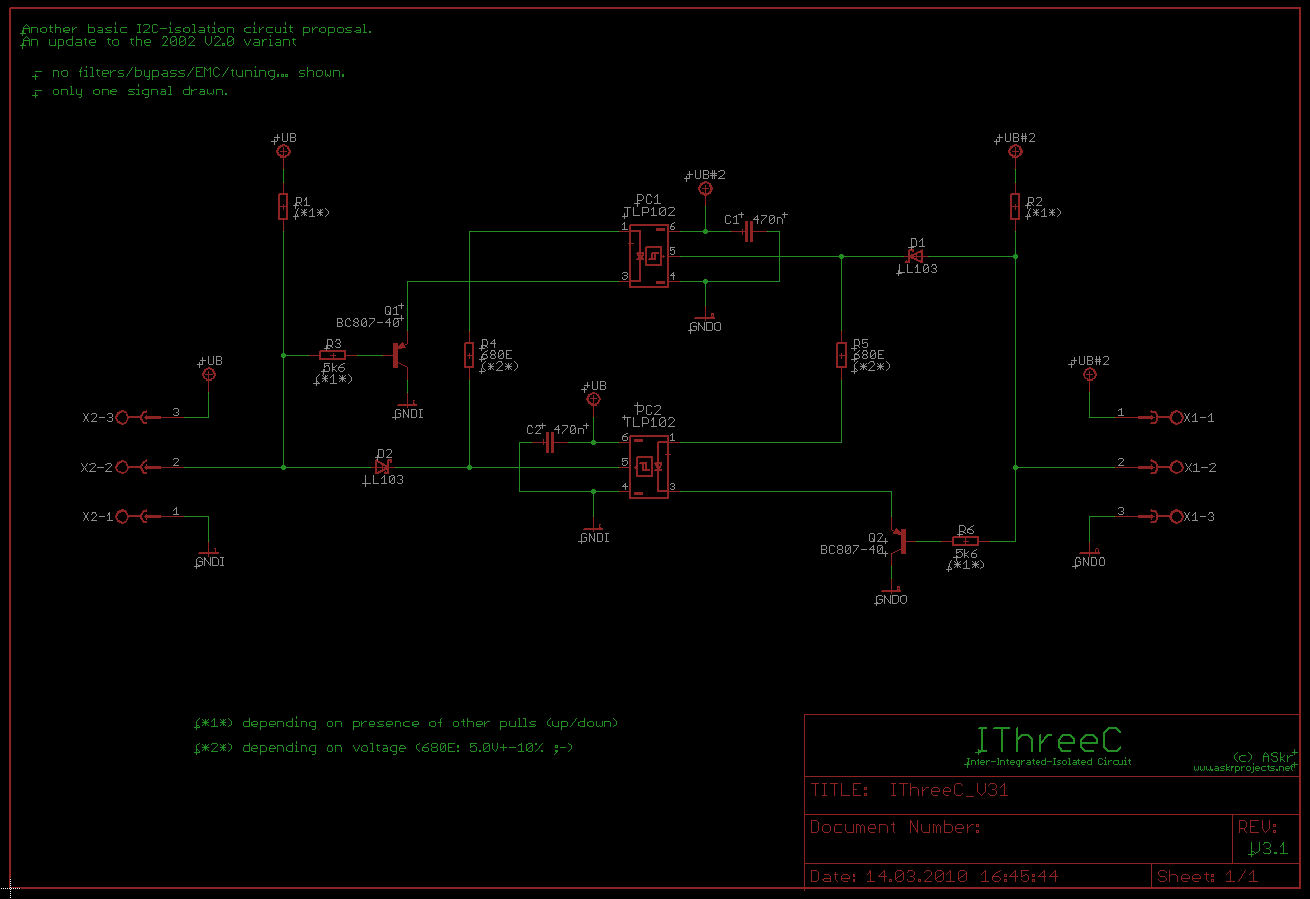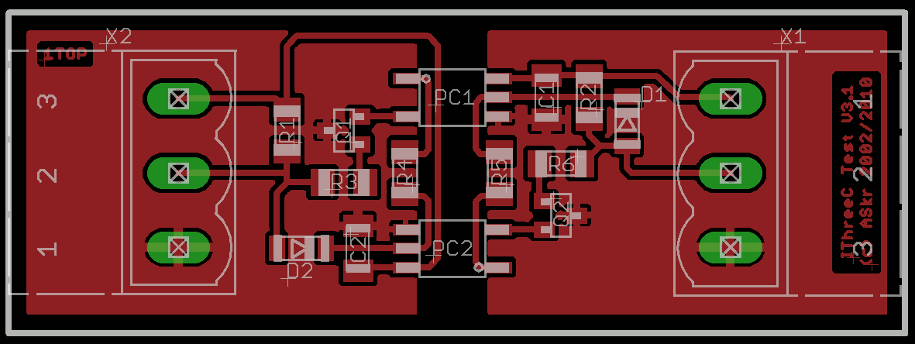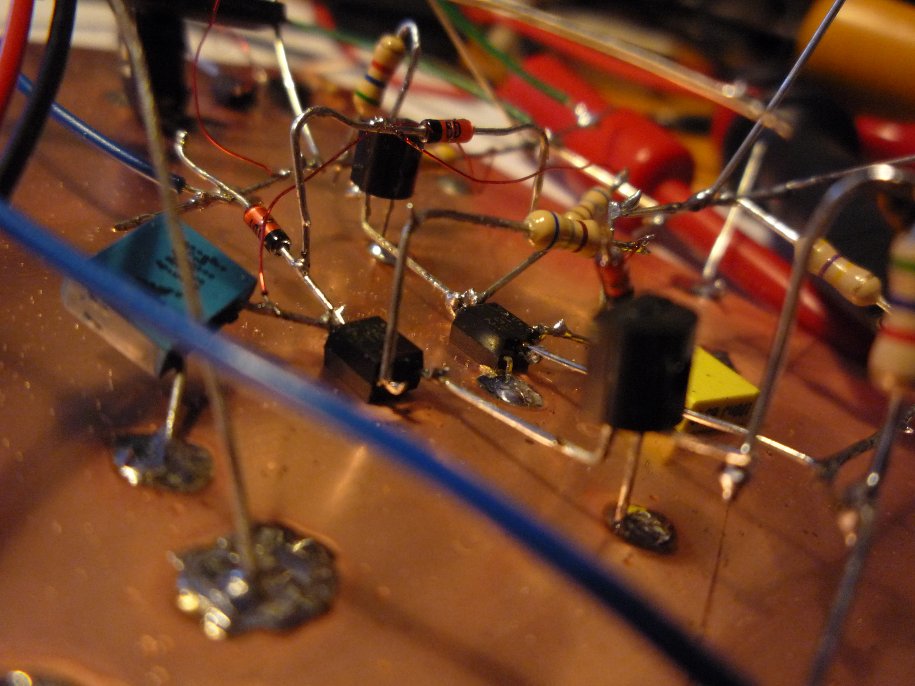Another updated variant of a galvanic isolation for an I2C bus.
(An update to the 2002 V2.0 circuit)
Features:
- basic schematic proposal
- ...
Hardware
Note that this is not a complete, fire and forget schematic! Just the basics...
Hooking this up to your own equipment will require a change of some values as well as adding some
"stabilization parts", to prevent oscillations which might occur, depending on your setup.
It may also require some speed tuning...
If you really need a blazing fast transmission, six-sigma(*1*) stability and an isolation, the I2C bus is probably not what you should use (except you add digital equipment: Two PICs or a not-that-cheap ready to use isolator). Otherwise, it's sufficient for stuff like this ;-)
(*1*) inferior to seven-senses, eight-eggs or nine-nails
A quick and dirty functional description:
The quiescent condition is having both signal ends (X2-2 and X1-2) pulled high by R1 and R2.
Because none of the photocoupler's LEDs are turned on at this time, their outputs are high (the TLP102 contains
a push-pull output stage) and provide a supply for the LED's anode of the other coupler.
Two diodes D1, D2 decouple these high outputs from the signals.
If any end of the signal line is pulled to GND, Q1 or Q2 turn on one of the photocouplers, whose output goes low. This low state will:
- turn off the supply for the LED of the other coupler
- sink the signal line down too (via D1 or D2)
The stability of this operation relies on the fact that the anodes of the LEDs are turned off more quickly than the activation of the two transistors.
The transferred low state of the signal line at the secondary side would retrigger the other coupler and turn off
the coupler on the primary end, which will lead to oscillations.
Because the anodes are turned off before the transistors pull down the cathode to ground, it's "stable"
(Stability depends on voltages, switching time and attached devices; This is why I call this a "proposal", not
a complete fire and forget circuit/schematic...).
Download
IThreeC V31:
Includes:
- schematic (PDF)
- placement (PDF)
- test layout, eagle (BRD)
DOWNLOAD: ithreec_v31.zip
ASkr 05/1999 initial low power version (V1.0)
ASkr 08/2002 another, faster version (V2.0)
ASkr 03/2010 another variant (v3.1)




